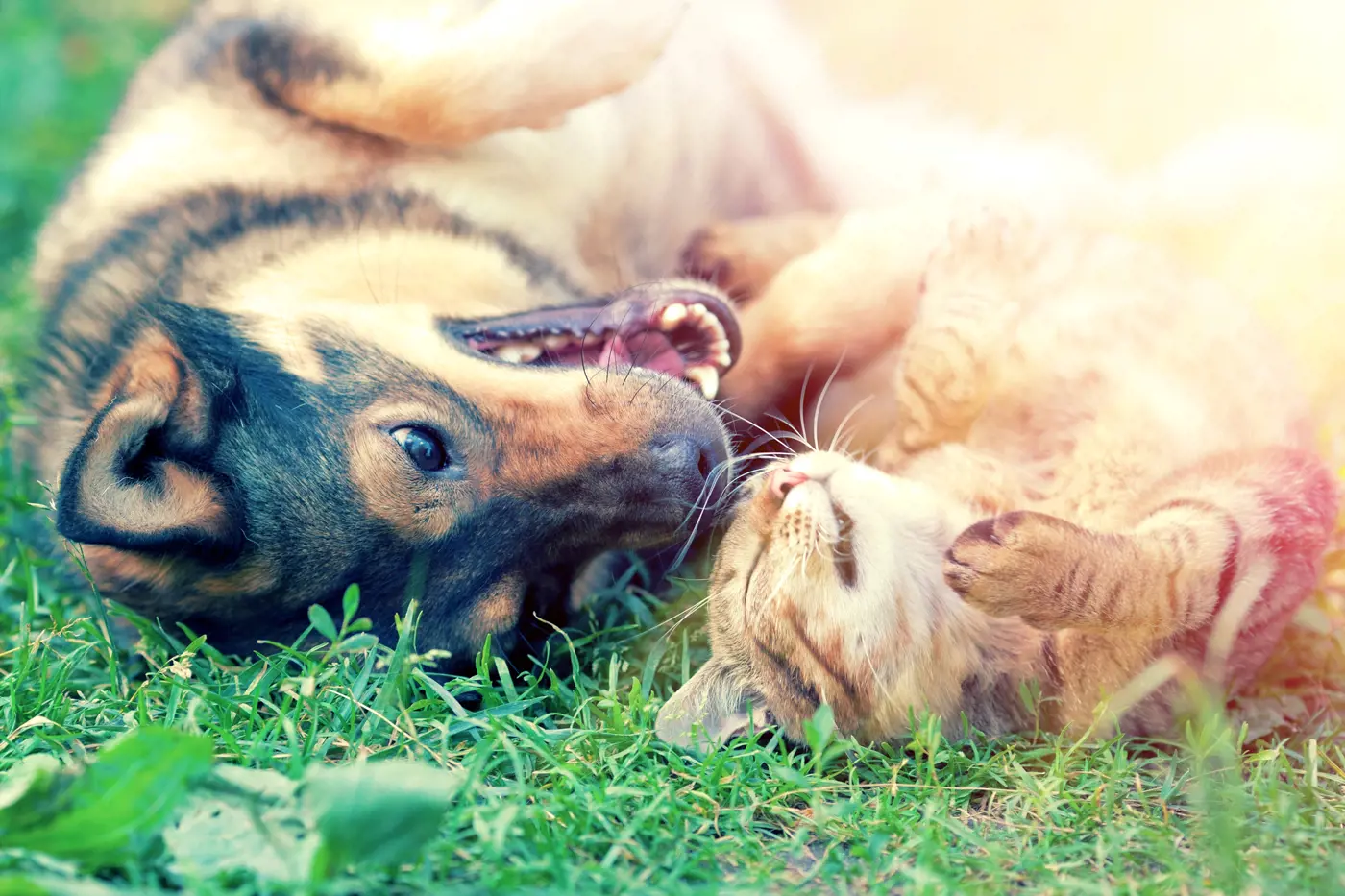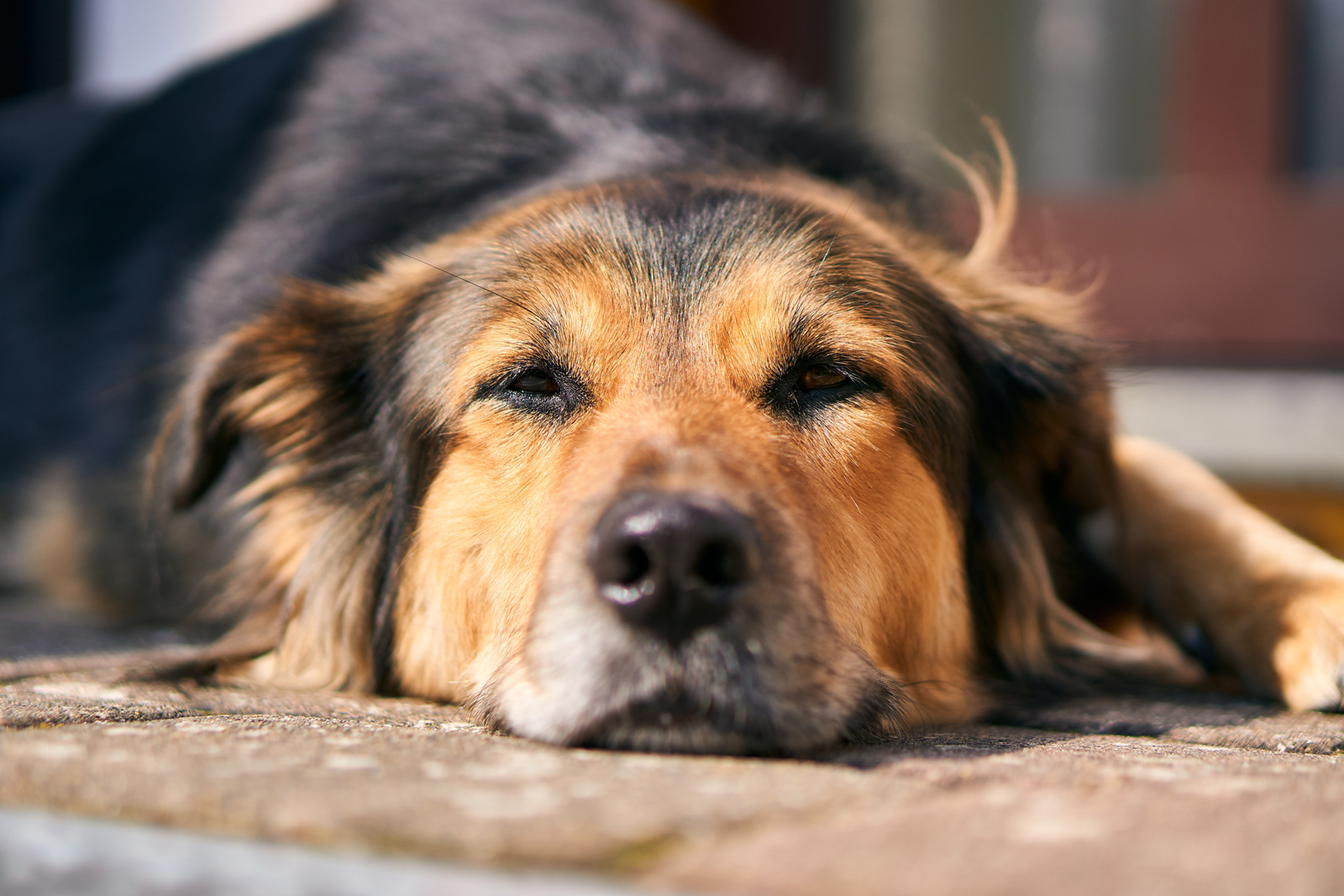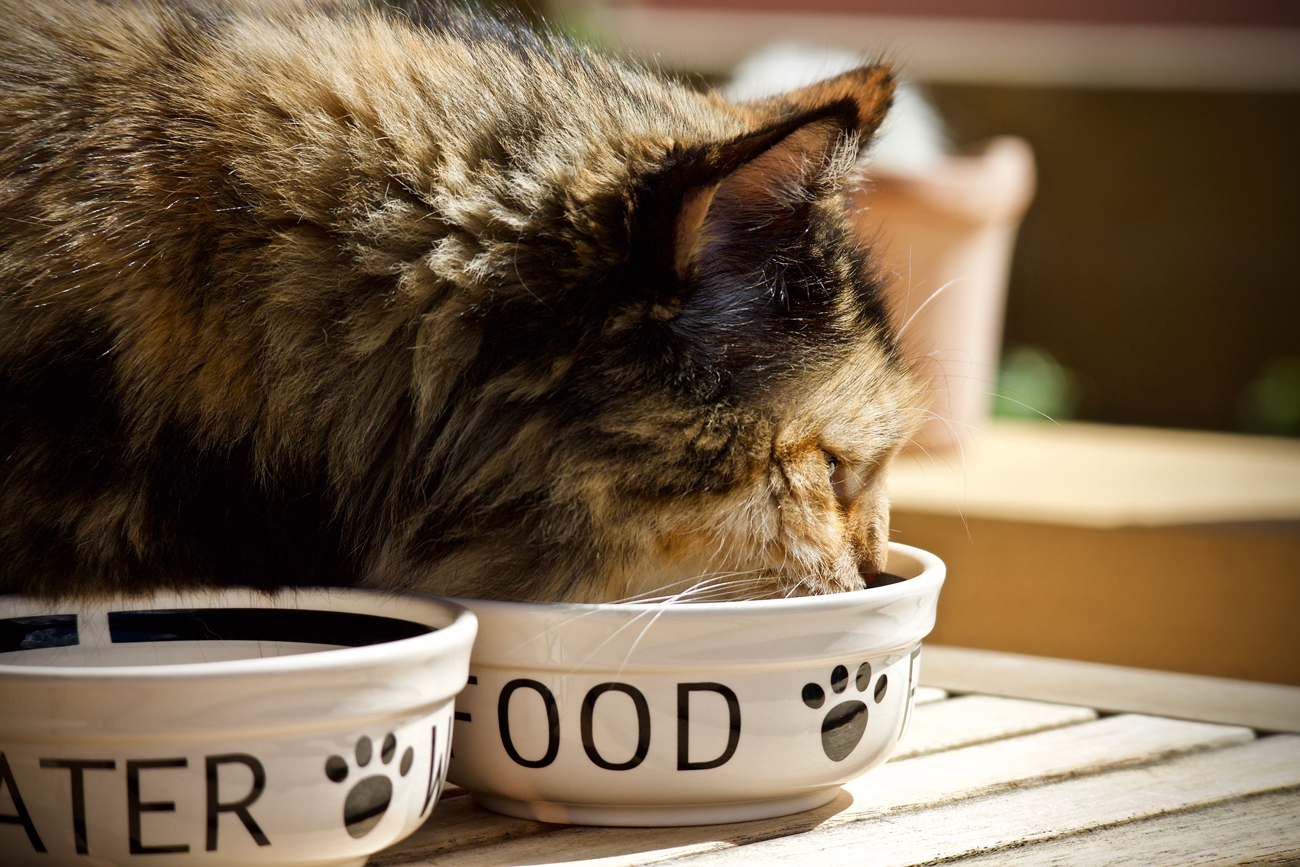What’s causing your pet’s allergies?
12th May, 2020

One of the many ways our furry friends are similar to us is that they’re susceptible to certain allergies.
This is the case for both cats and dogs. And just like allergies in humans, allergies in our pups and kitties are a result of a reaction by their immune systems to a foreign substance. These substances (or allergens) tend to be harmless to animals without the allergy.
But in cats and dogs who are allergic to them, the body identifies the substance as dangerous and can result in your poor pet having an extreme reaction to them.
Though, while it’s relatively easy to diagnose allergies in humans, it’s typically quite difficult for cats and dogs. This is because there are lots of different, potential types of allergies and it’s common for pets to exhibit the same symptoms. It’s also harder because they’re unable to tell us how they’re feeling!
If you’re concerned your beloved feline or pooch might be allergic to something – or maybe a number of things – this guide could help you get to the bottom of things.
Is it an allergy or intolerance?
If you’re to accurately diagnose an allergy in your moggy or mutt, it’s important you know the difference between an allergy and an intolerance. This is especially the case if you think your pet may be allergic (or intolerant) to a certain type of food.
Covering this topic, Purina writes that food allergies among dogs in particular aren’t as common as many people think. In fact, they only account for around 10% of all allergies in canines.
Most food allergies are, in fact, intolerances. An allergy involves the immune system, meaning that the animal’s body has been exposed to the allergen previously. On the other hand, an intolerance doesn’t involve the immune system and can show itself the very first time the pet comes into contact with the substance.
Purina gives the example of lactose intolerance. An animal suffering from lactose intolerance would mean that they are missing the enzymes required to digest lactose. So if they were given milk, they might suffer from diarrhoea as they would be unable to digest the ingredient.
Intolerances usually result in gastrointestinal symptoms, such as diarrhoea and/or vomiting. In contrast, allergies usually (but not ) lead to a skin reaction, for instance itching and swelling.

Are some breeds more susceptible to allergies than others?
Unfortunately, some dog breeds are far more likely to develop allergies than others. This Dog’s Life lists some of the most common breeds:
Bichon Frise
This bubbly breed is prone to contact allergies that can cause skin problems. They can also be extra sensitive to airborne allergens from flowers, trees, grass and dust, as well as flea bites.
Boxer
Boxers are renowned for being sensitive to dog food containing high levels of grain, such as corn or wheat. They can also be affected year-round by allergies from weeds, trees, pollen and dust.
Bull Terrier
This breed is susceptible to several types of allergies. Contact allergies, sensitive skin and allergens that are inhaled (such as pollen, dust, mildew and detergens) are just some of them. They are also prone to developing atopic dermatitis, an allergic skin reaction that leads to irritation, infection, itching and discomfort.
Cocker Spaniel
Food, inhalant and contact allergies are the most common allergies suffered by this beloved breed. Allergies from food usually lead to itchy feet and ears. Inhalant allergies include pollen and also materials such as copper, plastic, wool and synthetics.
German Shepherd
German Shepherds are known to develop environmental and food allergies, with the short haired version of the breed particularly susceptible to skin contact allergies. Skin allergies are brought about by pollen, fleas and food (such as chicken, beef, corn, dairy, soy and wheat).
Golden Retriever
The gorgeous Golden Retriever is unfortunately prone to four main allergies: food, contact, flea and canine atopic dermatitis. Food allergies can be a result of things like soy, wheat, dairy, some poultry and beef, while skin irritants include mould, grasses, fleas, dust and weeds.

Labrador Retriever
The fellow Labrador Retriever has been known to develop flea, food, contact, bacterial and inhalant allergies – all of which typically show signs in the form of problems with the skin.
Maltese
Itchy, irritated skin, thinning hair, wheezing and eye, nose or ear problems are all tell-tale signs that a Maltese is suffering an allergic reaction to something. It’s known that some Maltese are allergic to fabric (such as that used on doggy beds) and plastic (used for doggy food bowls).
Of course, just because the breeds mentioned above are more prone to developing certain allergies, doesn’t mean your dog of another breed is immune to them.
All dogs could be allergic to something, so it’s important to know the signs and to book a trip to the vet if you’ve any cause for concern. Remember, you can also call the Purely Pets 24-Hour Vet Helpline if you have a health question about your pet.
Different types of allergies
Let’s take a look in more detail at the different types of allergies found in pets, some of them listed above.
Dog allergies
Skin
Skin allergies are known as ‘atopy’, explains Blue Cross. Atopy is an inherited condition that affects many different dog breeds, but terriers in particular. Signs typically show when the dog is between six months and three years old.
If your poor pooch has a skin allergy then you might notice them start to itch more and more. They might lick, chew, bite, nibble or rub things like their paws, face, ears, tummy, groin or bottom.
As the disease progresses, your pet might get skin infections that make the skin feel greasy, smell odd or develop rashes. Dust mites in the house are the most common allergen, so your pet may suffer all year round.
Unfortunately there’s no test to confirm whether or not your dog has atopy. Vets will instead rule out all other potential causes of skin irritation, which can take a lot of time. They may ask to take skin samples to examine for infections and/or parasites, as well as ask you to carry out a diet trial to rule out any food allergies.
There’s no cure for atopy. But your vet is likely to recommend treatments to alleviate some of the side effects and keep your pet as happy and healthy as possible.
There’s no ‘one size fits all’ treatment; your vet will tailor their advice to your dog’s specific needs. Possible treatments include things like using a medicated shampoo, regular flea treatment, steroids that reduce immune response, and Omega 3 and 6 fatty acids.
As a side note, if your pooch has atopy you shouldn’t use him or her for breeding as the issue will be passed to their pups. Many vets actually recommend neutering to help reduce the symptoms of atopy.
Food
Any dog can develop a food allergy – it usually occurs with a food the dog has been eating for a while. Symptoms vary but usually result in itching, vomiting, diarrhoea or regularly passing mucus or blood.
A diet trial will be recommended if your vet suspects your pooch is allergic to a certain type of food. It’s likely you’ll have to feed your pet a certain food recommended by your vet for between six and 12 weeks – you can’t feed them anything else during this time.
Symptoms might improve in your hound during this time. You should book in another vet appointment for a recheck and to talk through your options.

Fleas
It’s important for your pet to receive regular flea treatment. If they haven’t, your vet might be worried about flea allergies. These usually lead to severe to intense itchiness and sore skin around their back, thighs and tail base. You might even spot fleas or flea dirt.
A flea allergy means you’ll need to be careful when it comes to flea treatment – not just for the pooch suffering but also for all other animals in your home. Bear in mind you’ll need to treat the fleas in your house as well as on your pet.
Treatment options include:
- Using flea treatment year-round for all your pets
- Treating your house (for instance by deep cleaning your bedding, carpets and other surfaces
- Using household flea spray (follow the directions carefully)
- Talking with your vet about other treatment if you’re still concerned
Cat allergies
Skin
Skin allergies among cats – also called atopy – have symptoms including itchy skin, hair loss, over-grooming, skin rashes and ear infections. Similar to the process in dogs, PDSA writes that your vet will rule out food and flea allergies first.
If they conclude that they have a skin infection, your puss will need lifelong management. It can be treated medically (for instance through steroids, antibiotics for infections or ear drops for ear infections) or by immunotherapy (tailored vaccines) if the exact cause of the allergy is known.
Food
Many of the symptoms associated with atopy are the same as for food allergies. Again, similar to dogs, your vet could ask you to put your cat on a food trial after they’ve ruled out other potential causes of itchy skin.
When the food causing the allergy in your kitty has been identified, it’s important to make sure you have control over their diet.
That includes making sure you don’t let them help themselves to any food around the home, warning any neighbours that tend to feed them about their allergy, and scanning the ingredients of foods and treats to make sure that they don’t include the allergen.
The last one is especially important because foods and treats tend to involve a whole mix of ingredients.

Fleas
Just the same as with dogs, regularly treating your feline for fleas is key to preventing flea infestations affecting them and your home.
If your cat is allergic to flea bites, its skin will react each time they are bitten, leading to inflammation and itchiness. If not treated effectively it can lead to serious skin disease and illness.
Basic flea treatment often isn’t enough for cats with flea allergies. You may need a repellent to stop your moggy from getting bitten.
In any case, if you suspect your cat has fleas or an allergy to fleas, take a trip to the vets as soon as you can. The same goes if you notice tell-tale signs of allergies of other forms, in either your cat or dog.
Pet insurance from Purely Pets
If your dog or cat suffers with allergies, or you think they might be developing a new one, talk to the team at Purely Pets. Our 24-Hour Vet Helpline, run by veterinary professionals, is here to give you advice when you need it most.
Treatment for allergies can be expensive and pet insurance can help you cover the costs. Some of the benefits of pet insurance through Purely Pets includes:
- Lifetime cover from £1,000-£15,000
- Excess starting from as little as £60
- Award Winning Pet Insurance
- 24 hour vet helpline
- Up to £2,000 for advertising associated with loss by theft or straying
Take a look at our website and see why Purely Pets was voted the Best Pet Insurance Provider in 2019.
Get a quick quote today and start protecting your pets for the future.
Helpful Pages
Recent Posts
Pet Insurance Quote
- 98% claims paid *
- Claims paid directly to vets
- 24/7 vet video consultations
- Interest free monthly payments




